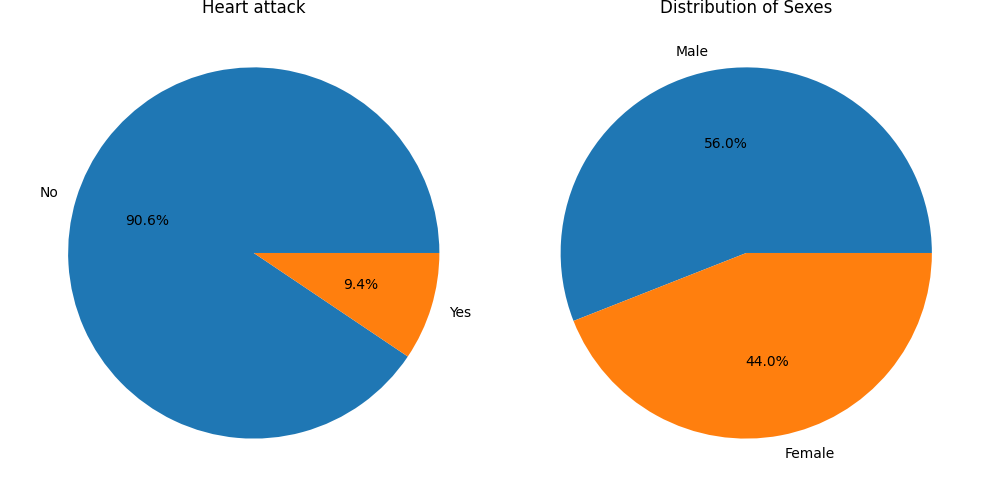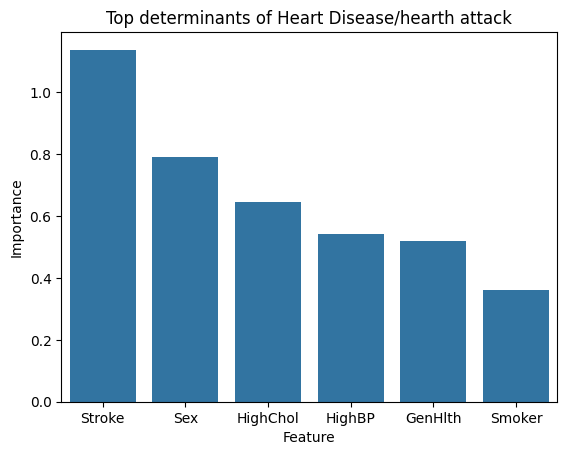Exploring demographic disparities in heart disease and heart attack prevalence
 FAITH NCHIFOR
FAITH NCHIFOR
The rate of deaths from heart disease and heart attack has rapidly accelerated over the years. Analyzing the demographic factors is very important as it can reveal interesting insights that can, in turn, be useful for preventive measures, screenings, and public health policies. In this article, I explore the Behavioral Risk Factor Surveillance System dataset from 2015.
Dataset
Risk Factor Surveillance System (BRFSS) is a health-related telephone survey collected annually by the CDC. The survey gathers responses from over 400,000 Americans on health-related risk behaviors, chronic health conditions, and the use of preventive services. The dataset being used contains 253k rows of cleaned data with 21 columns. These columns include:
| column | Age group | Sex | HeartDiseaseorAttack | BMI | HighBP | DiffWalk | Veggies | Smoker | AnyHealthcare | HvyAlcoholConsump | HighChol | |
| definition | The age group of participant | sex of the participant. Either female or male | If this participant has suffered a heat disease or attack | Body Mass Index, calculated by dividing the persons weight (in kilogram) by the square of their height (in meters) | If participant has a high blood pressure. A yes or no question | If participant has difficulty in walking. A yes or no question | Indicates if the person consumes 1 or more vegetable(s) daily | Indicates if the person has smoked at least 100 cigarettes | Indicates if the person has any form of health insurance. | Indicates if the person has more than 14 drinks per week | Indicates if the person has been told by a health professional that they have High Blood Cholesterol |
The dataset had more males than females, and only 9.4% of participants had been diagnosed with heart disease or a heart attack.

It was discovered that 12% of the females have a heart disease diagnosis and make up 57% of the population diagnosed with heart disease. In other words, more women than men have either heart disease or a heart attack.
Understanding health factors personal habits:
Science tells us that various factors can increase the risk of heart disease or heart attack, including high blood pressure, high cholesterol, smoking habits, inactivity, and obesity. The data shows that a majority of individuals with and without heart disease or heart attacks consume less alcohol, engage in physical exercise, eat fruits and vegetables daily, have access to health care, can afford health care, and have no history of stroke. However, the following disparities were discovered:
Blood pressure: 75% of heart disease patients have also been diagnosed with high BP, while only 39% of people without heart disease have been diagnosed with high BP.
Cholesterol Levels: 70% of people with heart disease have also been diagnosed with high cholesterol levels, while only 40% of people without heart disease have been diagnosed with the same.
Smoking habit: 62% of people diagnosed with heart disease have smoked at least 100 cigarettes, while only 42% of people without heart disease have done the same.
Obesity: 42% of people diagnosed with heart disease were obese, while 37% of people without these diagnoses were obese.
More interestingly, it was discovered that among persons with heart disease, 51% of those who were either overweight, normal weight, or underweight had difficulty walking. Additionally, 61% of overweight and 62% of obese persons had smoked at least 100 cigarettes.
Result of model prediction
A logistic regression model showed that the 6 top determinants of heart disease/heart attack were: Stroke, Sex, High Cholesterol, High BP, General Health, and whether a person is a smoker.

Dataset Source: https://www.kaggle.com/datasets/alexteboul/heart-disease-health-indicators-dataset
Subscribe to my newsletter
Read articles from FAITH NCHIFOR directly inside your inbox. Subscribe to the newsletter, and don't miss out.
Written by
